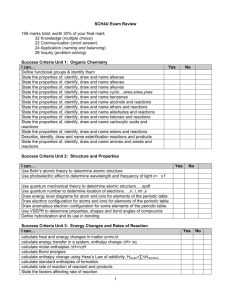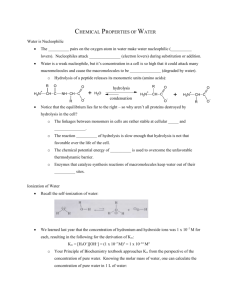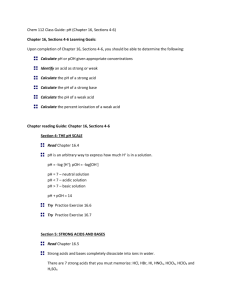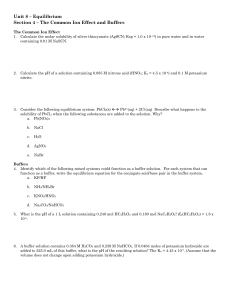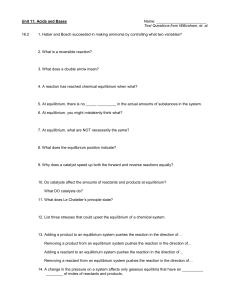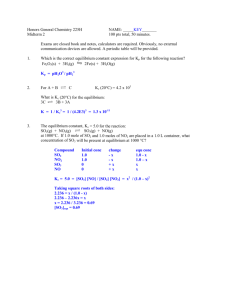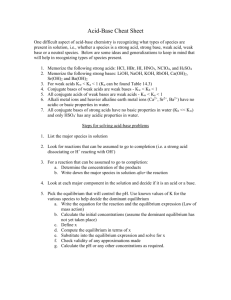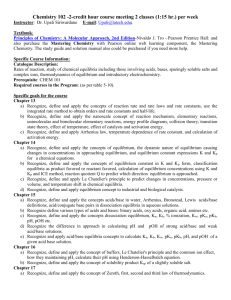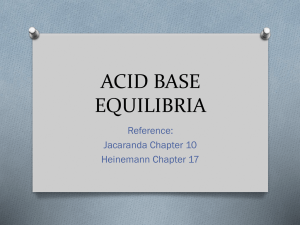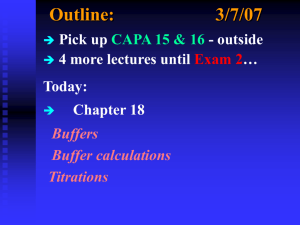Wordfile
advertisement
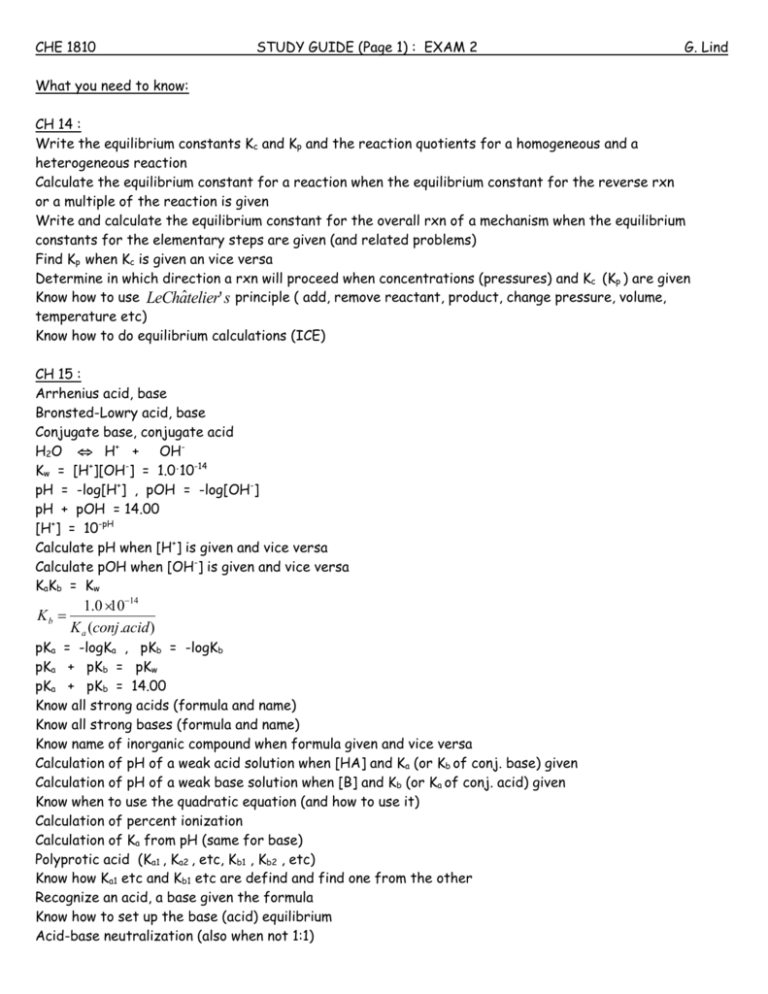
CHE 1810 STUDY GUIDE (Page 1) : EXAM 2 G. Lind What you need to know: CH 14 : Write the equilibrium constants Kc and Kp and the reaction quotients for a homogeneous and a heterogeneous reaction Calculate the equilibrium constant for a reaction when the equilibrium constant for the reverse rxn or a multiple of the reaction is given Write and calculate the equilibrium constant for the overall rxn of a mechanism when the equilibrium constants for the elementary steps are given (and related problems) Find Kp when Kc is given an vice versa Determine in which direction a rxn will proceed when concentrations (pressures) and Kc (Kp ) are given Know how to use LeChaˆtelier' s principle ( add, remove reactant, product, change pressure, volume, temperature etc) Know how to do equilibrium calculations (ICE) CH 15 : Arrhenius acid, base Bronsted-Lowry acid, base Conjugate base, conjugate acid H2O H+ + OHKw = [H+][OH-] = 1.0.10-14 pH = -log[H+] , pOH = -log[OH-] pH + pOH = 14.00 [H+] = 10-pH Calculate pH when [H+] is given and vice versa Calculate pOH when [OH-] is given and vice versa KaKb = Kw Kb = 1.0 ×10-14 K a (conj.acid) pKa = -logKa , pKb = -logKb pKa + pKb = pKw pKa + pKb = 14.00 Know all strong acids (formula and name) Know all strong bases (formula and name) Know name of inorganic compound when formula given and vice versa Calculation of pH of a weak acid solution when [HA] and Ka (or Kb of conj. base) given Calculation of pH of a weak base solution when [B] and Kb (or Ka of conj. acid) given Know when to use the quadratic equation (and how to use it) Calculation of percent ionization Calculation of Ka from pH (same for base) Polyprotic acid (Ka1 , Ka2 , etc, Kb1 , Kb2 , etc) Know how Ka1 etc and Kb1 etc are defind and find one from the other Recognize an acid, a base given the formula Know how to set up the base (acid) equilibrium Acid-base neutralization (also when not 1:1) CHE 1810 STUDY GUIDE (Page 2) : EXAM 2 G. Lind Molecular, ionic, net ionic equation (balanced) Salts (formulas, names) Find the acid, find the base (from which the salt was made) Determine whether an aqueous solution of a salt is acidic, basic, or neutral (and explain why) Calculate the pH of a salt solution Given the names of two acids (binary acids, oxoacids) draw best Lewis structures (considering formal charges) and determine and explain which of the two acids is the stronger one Given a chemical reaction determine the Lewis acids and the Lewis bases. Draw the Lewis structures and show the electron pairs which are donated (accepted) CH 16 : Common ion effect (Le Chatelier's principle) Buffer (acid, base) Henderson Hasselbalch equation (acid, base) Know when (not) to use the HH equation All problems using the HH equation Design a buffer of pH = xxx using a table of acids (bases) Buffer capacity, buffer range and pH range Calculate change in pH when acid (base) is added to buffer Calculate change in pH when acid (base) is added to nonbuffered solution Titrations : calculate the molarity of the base (acid) when titration data are given, calculate the pH at the equivalence point of an acid/base titration (strong/strong and strong/weak), determine the pKa from titration data Know how to write correct Lewis structures including all lone pairs and bonding pairs and using formal charges to find the best structure. Know how to determine the molecular geometry (linear, bent etc) There will be calculations – bring your scientific calculator Show all your calculations Show your calculations with units Report the answers with units and correct sig. fig. No units = wrong units Partial credit only when all work is shown No credit for a bare answer to a numerical problem (when calculations are needed) The exam will be a 110 minute exam Because of the time constraint I cannot promise that all subjects listed above will be on the exam Some of the assigned end of chapter problems, PEs may be on the exam Cheat Sheet : One letter size sheet (front and back). Only handwritten entries, no copies from a book taped or stapled No end of chapter problems with solutions on the cheat sheet Your name must be printed on the sheet. The sheet must be handed in with the exam
